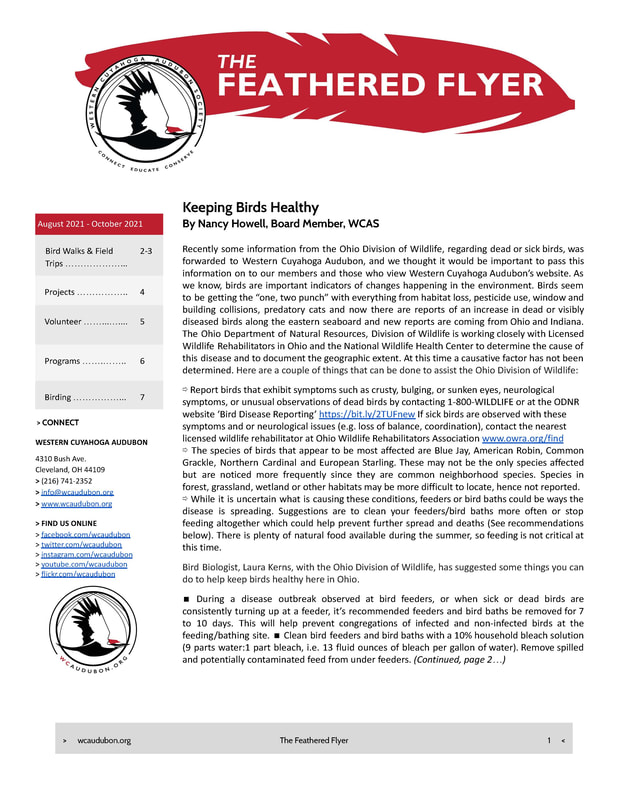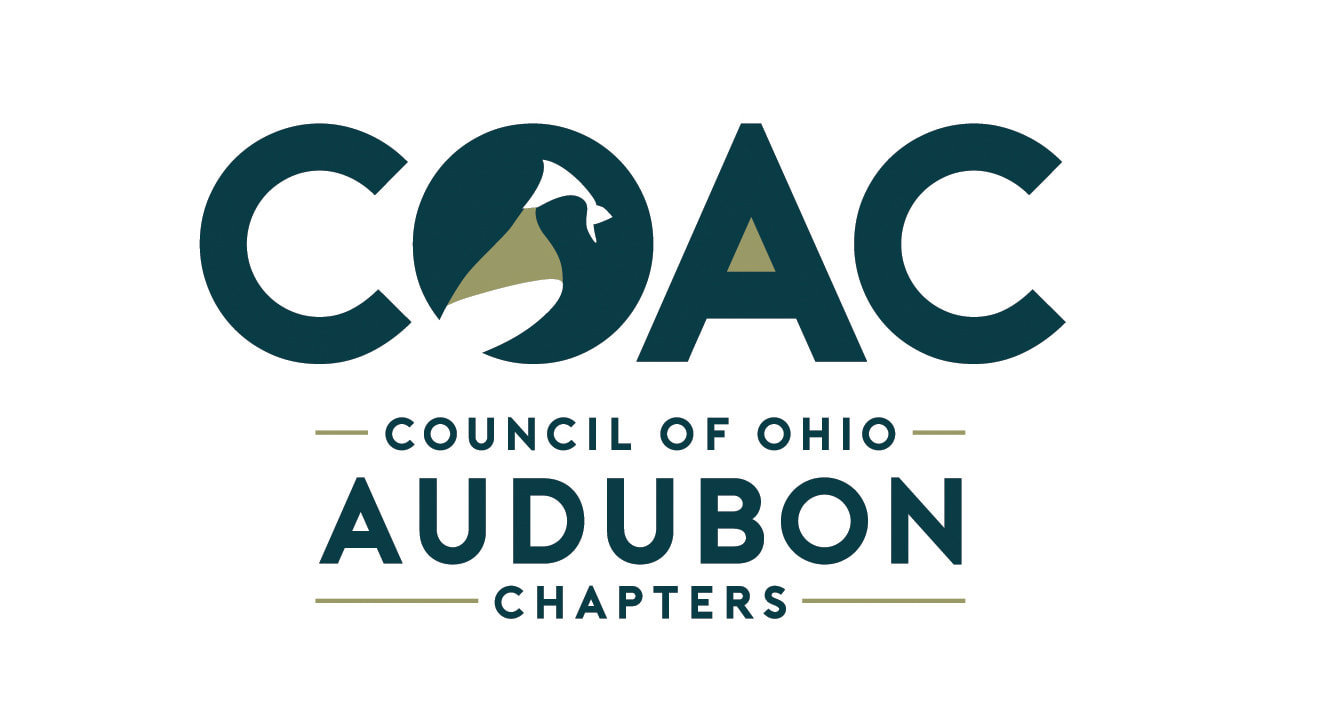If you tell me how climate change is affecting the bird population in the Rocky River Important Bird Area, I can see that, I can connect to that, it’s something I can grab on to. So, it’s breaking it into manageable pieces. - Stan Searles
An interview with Tom Romito, Western Cuyahoga Audubon Society and Stan Searles, Founder & Executive Director, Global Conservation Connections
Tom Romito: One of my passions today at Audubon is talking to the public about the importance of combating climate change. When I talk to my chapter about this, I find a lot of reticence to talk and people say that they’re interested, they’re passionate about the future of the planet but they’re not willing to speak, to say anything. Maybe because they think it’s a risk, that they’re jeopardizing their reputation. What advice can you give us about how to talk to the public about climate change?
1.Complex, Long-term Planetary Changes [00:00:48] Stan Searles: That’s a difficult subject and one we’re working on. Climate change is such a huge subject and climate change talks about changes in environmental conditions over a thousand years and the sea level rising three centimeters. That’s hard for people to grab on to. If you tell me the climate is getting two degrees warmer in the next twenty years, you know, in the summertime I can’t tell the difference between eighty-four degrees and eighty-seven degrees. It doesn’t mean anything to me.
2. Help People Connect to Climate Change Issues
People have to connect to the basic issue and what is driving it? The best evidence we have today, the best scientific fact gathering we have today says that, human actions primarily in the use of fossil fuels, is driving this problem. 3. Human Use of Fossil Fuels Drives Climate Change So, we have to connect to that. We have to break it into pieces small enough for people to digest and do something with. 4. Identify Local Climate Change Issues I mean, if you asked me to deal with climate change and rising sea levels, I can’t do that. 5. Local Bird Populations Affected by Climate Change But, if you tell me how climate change is affecting the bird population in the Rocky River Important Bird Area, I can see that, I can connect to that, it’s something I can grab on to. So, it’s breaking it into manageable pieces. 6. Climate Change and the Eradication of Habitat [00:20:05] Tom Romito: In trying to connect the concept of climate change with habitat, couldn’t we say that the eradication of the Rainforest in South America, Ecuador, Venezuela, is having a direct impact on the migration capabilities of songbirds that we enjoy seeing here in North America? 7. Destruction of Migratory Bird Habitat [00:02:30] Stan Searles: Well, certainly the habitat in South America is where these migrants winter. So, their winter homes are being destroyed. 8. Destruction of Migratory Stop Over Habitat What’s as important, is migratory stop over habitat along the way. When a bird flies from Venezuela to Magee Marsh, they have to stop along the way and they need food, they need protection, and they need shelter. So, it’s habitat all along the way. 9. Winter Grounds Preservation Is Key to Bird Populations Certainly destruction of habitat in the winter grounds is key to these populations. More so, most times, than habitat destruction up here in North America. 10. Migratory Birds Fan Out Across North America Because in North America the birds fan out and they move over a wide area. Down in South America they funnel into a small area. 11. Land Destruction Effects Vary Significantly So, if you destroy a thousand hectors in Venezuela, or you destroy four hundred acres in North America, the land destruction’s the same, but the effect on the birds is huge. 12. Plants Remove Carbon From the Atmosphere Certainly with climate change, if rainforest habitat is gone and trees and plants aren’t there, that’s one way carbon is removed from the atmosphere. Plants, trees, any plant material draws carbon dioxide out of the air. If those plants are gone, there’s fewer scrubbers out there helping us.
Watch the companion video: Ultra Walk: A Successful Model of Public Engagement for Habitat Conservation. Creating new ways to fund IBA habitat preservation. Learn about the Rocky River Important Bird Area's "Ultra Walk".
13. Climate Change Events Are Connected
Tom Romito: And as result, carbon dioxide stays in the air and we have extreme weather. Melting of the Polar Ice Caps, right? So, all these events are connected? Stan Searles: Oh, everything’s connected! Certainly when you hear the ocean levels may rise three centimeters, that’s connected to so many different things. It’s not just connected to Miami, Florida being underwater, it’s connected to changes in rainfall, changes to dramatic storms. 14. Climate Change Affects The Range of Migratory Birds With birds, it’s changes in their range. Birds that used to live in a certain area, and the temperature changes, will move north or south, or the range will be constricted, or birds are going to be forced to live in areas where other birds are now. 15. Climate Systems Are Densely Connected The whole ecological system, no matter whether it’s climate change or pollution, everything is so bound together many times in ways we don’t fully understand today. When things start going wrong, unfortunately, many times we just see the results thirty years later, where the problem was actually thirty years before. [00:04:54] Tom Romito: Stan, if when we’re speaking to audiences, particularly denier audiences, those who aren’t going to enter into this conversation, is there one single scientific fact that is overarching over all others that we could talk about that is undeniable? 16. The Unrestricted Release of Carbon Dioxide Affects Climate Change [00:05:18] Stan Searles: Probably not. The thing that hit my mind when you said that, because this is science, it’s an evolving theory and collecting a lot of information and almost all of it is pointing toward climate change being an issue. The bottom line for me is, even though this is so complex and difficult to get a hold of, if we say that the unrestricted release of carbon dioxide into the air, whether it’s from cars or factories or electrical plants burning coal - all this stuff we’re doing - I believe the evidence shows that is affecting climate change. Even if at some point we find out it’s not, and I don’t believe that’s going to be the case, those things going into the air? I don’t want my grandchildren breathing anyway.
This conversation was recorded at the Rocky River Nature Center, 24000 Valley Pkwy, North Olmsted, OH 44070.
Make A Donation to Western Cuyahoga Audubon. Your gifts guarantee chapter activities, programs and research continues to reach members and connect to birding conservationists around the world. Use our safe and secure PayPal payment button below to make a donation of any amount you choose. All donations are gratefully received.
Comments
|
Story BlogThe Feathered Flyer blog publishes human interest stories about birding and habitat conservation. After watching, ‘My Painted Trillium Quest' by Tom Fishburn, Kim Langley, WCAS Member said, “Wonderful! It was a lift just knowing that such a site exists and is being protected!”
Media LibrariesQuarterly NewsletterSTORIESPodcastsWCAS is a proud member of The Council of Ohio Audubon Chapters (COAC) and promotes chapter development by sharing the best practices, brainstorming solutions to common problems, and building relationships in workshops and retreats. Subscribe
VideosYouth
Advocacy
Clean Energy
Reporting
Awards
Volunteerism
Take ActionResourcesBlogsArchives
October 2023
Categories
All
|
EDUCATENews Blog
Monthly Speakers Field Reports Bird Walk Reports Christmas Bird Count-Lakewood Circle Media Library Newsletter Archive Education Resources STORE |
Western Cuyahoga Audubon Society
4310 Bush Avenue Cleveland, Ohio 44109 [email protected] Western Cuyahoga Audubon Society is a 501(c)(3) nonprofit organization. Your donation is tax-deductible. The tax ID number is: 34-1522665. If you prefer to mail your donation, please send your check to: Nancy Howell, Western Cuyahoga Audubon Treasurer, 19340 Fowles Rd, Middleburg Hts, OH 44130. © 2020 Western Cuyahoga Audubon Society. All rights reserved. Privacy Policy | Terms of Use | Legal | Store Shipping Rates | Site Map |









 RSS Feed
RSS Feed

